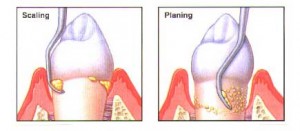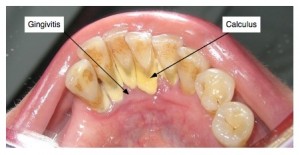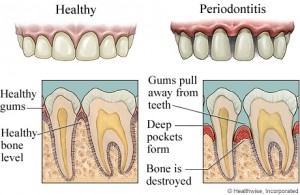You went to your dentist for professional cleaning of your teeth one fine day, expecting it to be done on the same day but your dentist tells you that you will need more than one appointment for the procedure. You might be confused and pretty much unwilling to make time and pay for another dental appointment however if you are having a chronic gum disease, this is part of the treatment plan. So how do you decide what to do when your dentist says you need more than one appointment for teeth cleaning?
What is scaling or teeth cleaning?
Dental teeth cleaning or teeth scaling is the removal of plaque and tartar from the tooth surface, either with the use of hand instruments (for example hand scalers and curettes) or mechanically (for example ultrasonic scalers).
Scaling can be supragingival (above the gums) or subgingival (beneath the gums) depending upon the site of the deposits. Tooth scaling above the gums is usually completed first as far as initial therapy after a dental examination and local anesthesia is usually not necessary. Subgingival scaling may require local anesthesia and involves the removal of deposits on the root of the tooth below the gums. Root planing aims to remove a thin layer of dead cementum (cells on the root) in addition to deposits.
The teeth are usually polished after scaling, preferably using a rubber cup and a prophylaxis paste. You can then appreciate the feeling of a clean mouth, which you must then maintain your dental hygiene.
Why do you need teeth cleaning?
Teeth cleaning remove plaque and tartar from the tooth surface. Dental plaque is a firmly adherent mass of bacteria on the tooth surface which cannot be rinsed off but can be removed by brushing. It is basically the root of most dental evils and it is commonly accepted that the accumulation of plaque causes gingivitis (inflammation of the gums).
Teeth tartar, or known as calculus in dental terms, is a calcified deposit found on teeth as well as on other solid objects in the mouth. It is formed by mineralization or calcification of plaque deposits. Tartar, particularly tartar found beneath the gums, is associated with periodontal disease. This may be because it is covered by a layer of plaque but its main damaging effect is probably that it acts as a retention site for plaque and bacterial toxins. The presence of tartar makes it difficult to implement adequate oral hygiene.
When will more than one appointment be required for teeth cleaning?
Basic treatment of chronic gingivitis mainly centers on plaque control and relatively simple techniques. Three independent components need to be carried out at the same time:
- Instructions in proper oral hygiene.
- Removal of plaque and tartar by scaling.
- Correction of plaque-retention factors, for example faulty fillings and incorrectly positioned teeth.
Several dental visits may be needed to treat the disease.
Treatment of chronic periodontitis (infections of the structures around the teeth, which include the gums, periodontal ligament and alveolar bone) involves meticulous removal of dead tissues on the root surfaces in the gum pockets and requires skillful techniques therefore considerable time is need for treatment.
Deep gum pockets require root planing, which is the removal of embedded tartar beneath the gums and dead cementum. Subgingival scaling and root planing significantly alter the bacterial composition of the gum pocket and are effective at reducing gums inflammation and reducing gum pocket depth.
Traditionally one quadrant (a quarter of the mouth) at a time is treated under local anesthesia, partly because it is painful and partly because it is tedious when performed meticulously, which is the only worthwhile way to do it. Some dentists may prefer a full mouth approach with concurrent use of a chlorhexidine mouthwash. The aim is to minimize chance of reinfection by reducing bacterial load in the gum pockets and inside the mouth.
Response to teeth cleaning beneath the gums takes up to 8 weeks. Decrease in gum pockets depth and increases in gum recession are usually seen. Bleeding on probing should stopped if there is complete resolution of the disease. Persistent bleeding however requires further subgingival scaling. Maintenance of subgingival scaling is required every 3 months to prevent reinfection.
How to decide whether you need more than one appointment for teeth cleaning
Do you suffer from any of the following symptoms?
- Bleeding gums
- Unpleasant taste in the mouth
- Red, swollen, sore gums
- Flabby gum pockets
- Loosening of teeth
- Receding gums
- Have lots of plaque and tartar in the mouth
- Pus oozing out of the gum pockets
If you do, you might be having periodontal or gum disease therefore it is best that you follow your dentist’s advice and attend the further appointments required to heal the disease.



